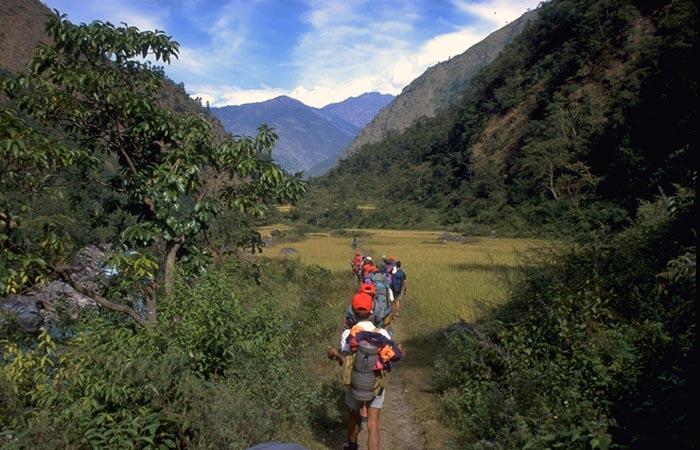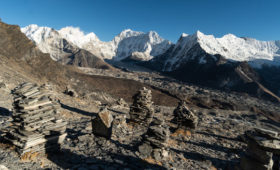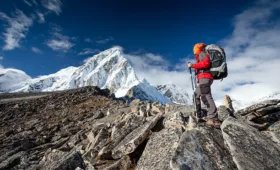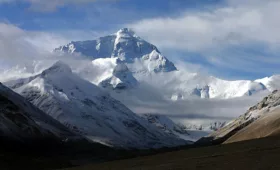Nepal, the land of soaring peaks and ancient trails, beckons backpackers from around the globe. The allure of trekking beneath the world’s highest mountains, immersing yourself in vibrant cultures, and embracing the freedom of the open trail is undeniable. If you’re dreaming of a backpacking adventure in Nepal, you’ve come to the right place. This comprehensive guide will equip you with the knowledge and inspiration to embark on an unforgettable Himalayan journey.
Why Choose Backpacking in Nepal?
- Unparalleled Scenery: From the snow-capped giants of the Everest region to the lush valleys of Annapurna, Nepal offers landscapes that will leave you breathless.
- Cultural Immersion: Trekking through remote villages allows you to connect with the warm hospitality of the Nepali people and witness their unique traditions.
- Affordability: Compared to other trekking destinations, Nepal offers excellent value for your money.
- Flexibility and Freedom: Backpacking allows you to tailor your itinerary, explore at your own pace, and embrace the spontaneity of travel.
- Adventure and Challenge: The diverse terrain and varying altitudes provide a challenging yet rewarding experience.
Planning Your Backpacking Adventure:
- Choosing Your Trek:
- Everest Region: The classic Everest Base Camp trek is a must-do for many, but consider other options like the Gokyo Lakes trek for a less crowded experience.
- Annapurna Region: The Annapurna Circuit and Annapurna Base Camp treks offer stunning views and diverse landscapes. The Poon Hill trek is a shorter, easier option.
- Langtang Region: Explore the beautiful Langtang Valley, recovering from the 2015 earthquake, and witness its resilient spirit.
- Off-the-Beaten-Path: Explore remote regions like Dolpo, Mustang, or Kanchenjunga for a truly unique and adventurous experience.
- Permits and Visas:
- Ensure you have a valid Nepal visa.
- Obtain the necessary trekking permits, such as the Trekkers’ Information Management System (TIMS) card and national park entry permits.
- Best Time to Go:
- Spring (March-May): Pleasant temperatures, blooming rhododendrons, and clear skies.
- Autumn (September-November): Stable weather, clear views, and post-monsoon freshness.
- Avoid the monsoon season (June-August) due to heavy rainfall and potential landslides.
- Packing Essentials:
- Backpack: Choose a comfortable and durable backpack with a capacity of 50-70 liters.
- Hiking Boots: Invest in high-quality, waterproof hiking boots that are broken in before your trek.
- Clothing: Pack layers of warm clothing, including a down jacket, fleece, waterproof jacket and pants, and thermal underwear.
- Sleeping Bag: Bring a sleeping bag suitable for the temperatures you’ll encounter.
- First-Aid Kit: Include essential medications, bandages, antiseptic wipes, and altitude sickness remedies.
- Water Purification: Pack water purification tablets or a filter.
- Headlamp: Essential for navigating in the dark.
- Trekking Poles: Help reduce strain on your knees and provide stability.
- Sun Protection: Sunscreen, sunglasses, and a wide-brimmed hat.
- Budgeting:
- Nepal is relatively affordable, but trekking costs can vary.
- Factor in permit fees, accommodation, food, transportation, and guide/porter fees (if applicable).
- Tea houses offer budget-friendly accommodation and meals.
- Acclimatization:
- Altitude sickness is a serious concern. Plan your trek with gradual ascents and rest days.
- Stay hydrated and avoid strenuous activity in the initial days.
- Respectful Travel:
- Dress modestly, especially when visiting religious sites.
- Learn basic Nepali phrases.
- Ask permission before taking photos of locals.
- Support local businesses.
- Practice Leave No Trace principles.
Choosing a Guide or Trekking Agency:
- While independent trekking is possible, hiring a local guide or trekking agency can enhance your experience and provide valuable support.
- Choose a reputable agency with experienced guides who are knowledgeable about the region.
- Ensure they prioritize safety and responsible tourism practices.
The Magic of Backpacking in Nepal:
Backpacking in Nepal is more than just a trek; it’s a transformative experience. You’ll witness the raw beauty of the Himalayas, connect with the warmth of the Nepali people, and discover the resilience of the human spirit. Embrace the challenges, savor the moments, and allow Nepal to leave an indelible mark on your soul.




